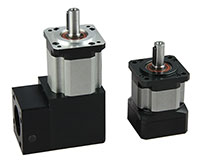How to Reduce Brushless DC Motor Noise?
Mechanical vibration and noise are key factors when designing a brushless DC motor. Uncontrolled noise and vibration often cause rapid system degradation, affect efficiency, and adversely affect wear on this control system. This is especially true of sensitive medical equipment, robotics, commercial systems, and handheld devices. Noise and vibration can have a significant impact on system performance, reliability, and operating costs. For handheld devices, vibration can be transferred to the user, causing safety concerns and pressure injuries. Whether in a hospital, laboratory or office, excessive noise from motors running around people can be a health hazard.
System designers are constantly learning about the application of the motor and how the load, mass, balance and damping of the moving parts interact. But optimizations can also be made inside the motor. Brushless motors and their permanent magnet rotors are designed to run quieter than brushed motors. The stator is surrounded by electronic windings, giving it greater symmetry, which mitigates most of the vibrations generated by the motor itself. Adding a few extra parts to the brushless motor design can further reduce noise and vibration.
Bearing Selection
If the bearing system in a BLDC motor is well designed, it can run continuously for more than 25,000 hours. One of the main reasons why low-level motor designs fail is fast bearing wear. By using high-quality ball bearings, designers can reduce the load intensity on the bearing by more than 100 times, thereby optimizing performance and extending its life.
Magnetic Material
The internal balance of brushless motors can be enhanced by using specialized magnetic materials in the rotor. This material can provide higher energy density. The use of NdFeB material means that the rotor assembly can be smaller and provides better internal balance for minimal vibration. By choosing materials with high energy density properties, designers can achieve better motor performance with smaller magnets. Neodymium magnets also do not demagnetize over time, so they provide more stable performance than other materials over a longer period of time.
Machined Parts
One of the key factors in reducing vibration is improving the accuracy of the internal components of the motor. Where ordinary motors are designed using stamped parts, high-precision brushless DC motors use machined parts. This approach provides tighter internal tolerances for the motor. Motors should be tested, balanced and calibrated before delivery to ensure parts are installed correctly for optimum operation.
The above provides a solution for engineers to control the vibration and noise of brushless DC motors.

